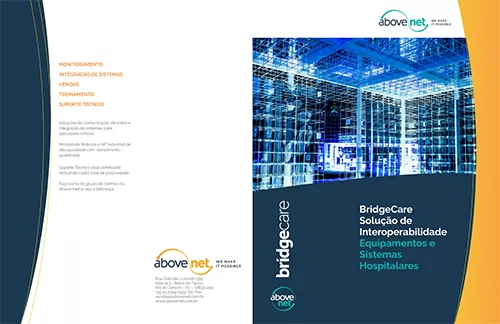The digital age is reshaping every aspect of our lives, and the healthcare industry is no exception. Digital Transformation in Healthcare represents a paradigmatic shift in the way we design, deliver and manage medical care. This revolution goes far beyond the mere adoption of new technologies; it is a complete reinvention of care models, workflows and the relationship between patients and healthcare providers.
From the implementation of Electronic Health Records (EHR) to the use of Artificial Intelligence for diagnostics, to telemedicine and IoT devices for continuous monitoring, digital transformation is redefining possibilities in the healthcare field. This evolution promises more personalized, efficient and accessible care.
In this article, we address the crucial importance of digital transformation in healthcare, the interoperability challenges it presents, and how innovative solutions are redefining the future of healthcare systems integration. We explore the complexities of the current scenario and present a vision of a future in which technology not only facilitates, but enhances, patient-centered care.
The Importance of Digital Transformation in Healthcare
The urgency of this transformation is undeniable. In a world where the demand for healthcare services grows exponentially, digitalization offers solutions to critical challenges. A single patient record and increased treatment safety are a reality and require the integration of historical data into a single record. Operational efficiency increases significantly, freeing healthcare professionals from administrative tasks so they can focus on what really matters: direct patient care.
Furthermore, digital transformation catalyzes medical research and innovation. The structuring and access to large volumes of integrated data facilitates studies and accelerates the development of new treatments. Both in the context of large hospital networks and in public health, the ability to unify care and analyze data on a large scale transforms policy planning and response to health emergencies.
Some of the most significant benefits include:
- Single Patient Record : Integrating patient data regardless of the location of care offers patient security and efficiency.
- Reduction of multiple Information Collection: With integrated and unique information, data entry and bureaucratic activities are reduced allowing focus on the patient.
- Acceleration of medical research and innovation : Access to large volumes of structured and integrated data drives the development of new treatments.
- Improved public health : Large-scale data analysis revolutionizes policy planning and response to health emergencies.
- Patient empowerment : Easy and secure access to your own health information, in addition to integrated services for scheduling appointments, vaccines and telemedicine, allow for faster scheduling and faster treatment decisions.
The challenges that digital transformation in healthcare generates for interoperability between healthcare systems
In the scenario of digital transformation in healthcare, the efficient integration of information between different systems is a monumental challenge. In any hospital we can find an electronic medical record, also known as Hospital Information System or (HIS), laboratory systems or Laboratory Information System (LIS), and imaging systems, known as Picture Archiving and Communication System (PACS). Other no less important systems such as telemedicine, and even IoT devices for telemetry are also part of this integration challenge. Despite industry standardization attempts to homogenize communication, there are different communication and storage protocols for each, which generate conflicts and incompatibilities.
This digital babel results in a number of critical problems:
- Infeasibility of Integrations: With so many variables and terminologies, it is impossible to manage an integration architecture without a dedicated system or platform.
- Inconsistent data : A patient may have conflicting information in different systems, compromising the quality and safety of care.
- Conduct errors : Incomplete or incorrect information can lead to erroneous clinical decisions.
- Constant rework : Healthcare professionals spend precious time entering the same information into multiple systems.
- High costs : Lack of interoperability creates operational inefficiencies that inflate healthcare costs.
- Patient frustration and insecurity : The need to repeat information at each appointment harms the patient experience.
- Difficulty in managing private and public health networks : Companies and government agencies face obstacles in consolidating data and making evidence-based decisions.
How to solve the complex challenge of interoperability between healthcare systems
The solution to this intricate problem requires a multifaceted and intelligent approach. Imagine a central platform capable of acting as a universal translator between systems, detecting integration inconsistencies and errors in transmitted data in real time. This ideal platform would apply complex business rules to ensure the integrity and quality of information, offering full visibility into the flow of data.
More than that, such a solution would generate actionable insights to continuously improve data quality and process efficiency. By dynamically pointing out changes in integrated systems, it would eliminate the need for constant manual interventions. Intuitive dashboards would allow managers to monitor the health of data integration in real time, anticipating and resolving issues before they impact patient care.
This approach would not only solve current problems, but also establish a solid foundation for the continued evolution of healthcare systems, preparing them for the future challenges of digital medicine.
Bridgecare and its new feature, Cognilink transforms the reality of healthcare interoperability
Bridgecare Bridgecare proven healthcare interoperability solution:
- Manages data from over 27 million patients
- Processed more than 380 million calls
- Stores more than 185 million test results
- Registered more than 190 million medication dispensings
- Monitors more than 30 million pregnancy and prenatal exams
With an impressive 99.9999% availability, Bridgecare demonstrates its reliability in an industry where every second counts.
It is in this context that Bridgecare , which already has the largest patient database in Latin America and one of the largest in the world in just one system, presents its latest innovation: Cognilink.
Cognilink is the natural evolution of this platform, bringing artificial intelligence to the heart of healthcare interoperability. Its main features include:
- Real-Time Alarm Panel : Monitors and alerts you about integration issues in the last 24 hours, allowing immediate action.
- Intelligent Error Detection : Automatically identifies and categorizes inconsistencies in data loads, from missing required fields to outdated information.
- Integration Quality Score (IQ) : Assigns a score to each integrated system, encouraging continuous improvement in data quality.
- Predictive Analysis : Uses historical patterns to anticipate potential problems before they affect operations.
- Customizable Dashboards : Allows managers to view crucial metrics and make informed decisions quickly.
- Task Automation : Creates automatic workflows for error correction, reducing the need for manual intervention.
- Complete Traceability : Maintains a detailed record of all transactions, from shipment to eventual conflict, and offers an intelligent search system facilitating audits and regulatory compliance.
Bridgecare Cognilink is not just a tool, it is an intelligence ally that constantly evolves.
For private institutions and public healthcare systems, Cognilink means:
- Dramatic reduction in integration troubleshooting time
- Significant improvement in clinical data quality
- Increased reliability of information for decision making
- Optimization of IT resources, freeing teams for strategic projects
- Easy compliance with data protection regulations
Conclusion
In a scenario where the digital transformation of healthcare is imperative, Cognilink positions itself as a fundamental piece. It not only solves today's interoperability challenges, but also prepares institutions for a future where continuous data integration will be the norm, not the exception.
By adopting Bridgecare with its new AI capability, Cognilink, healthcare organizations take a decisive step towards a truly connected, efficient and patient-centric healthcare ecosystem. It's more than a technological solution; It is a catalyst for a revolution in the quality of healthcare.
Want to learn more about how Bridgecare with its AI, Cognilink, can transform interoperability in your private institution or public healthcare system?
Download our complete catalog now and discover how we can help you face the challenges of digital transformation and system interoperability in healthcare.







